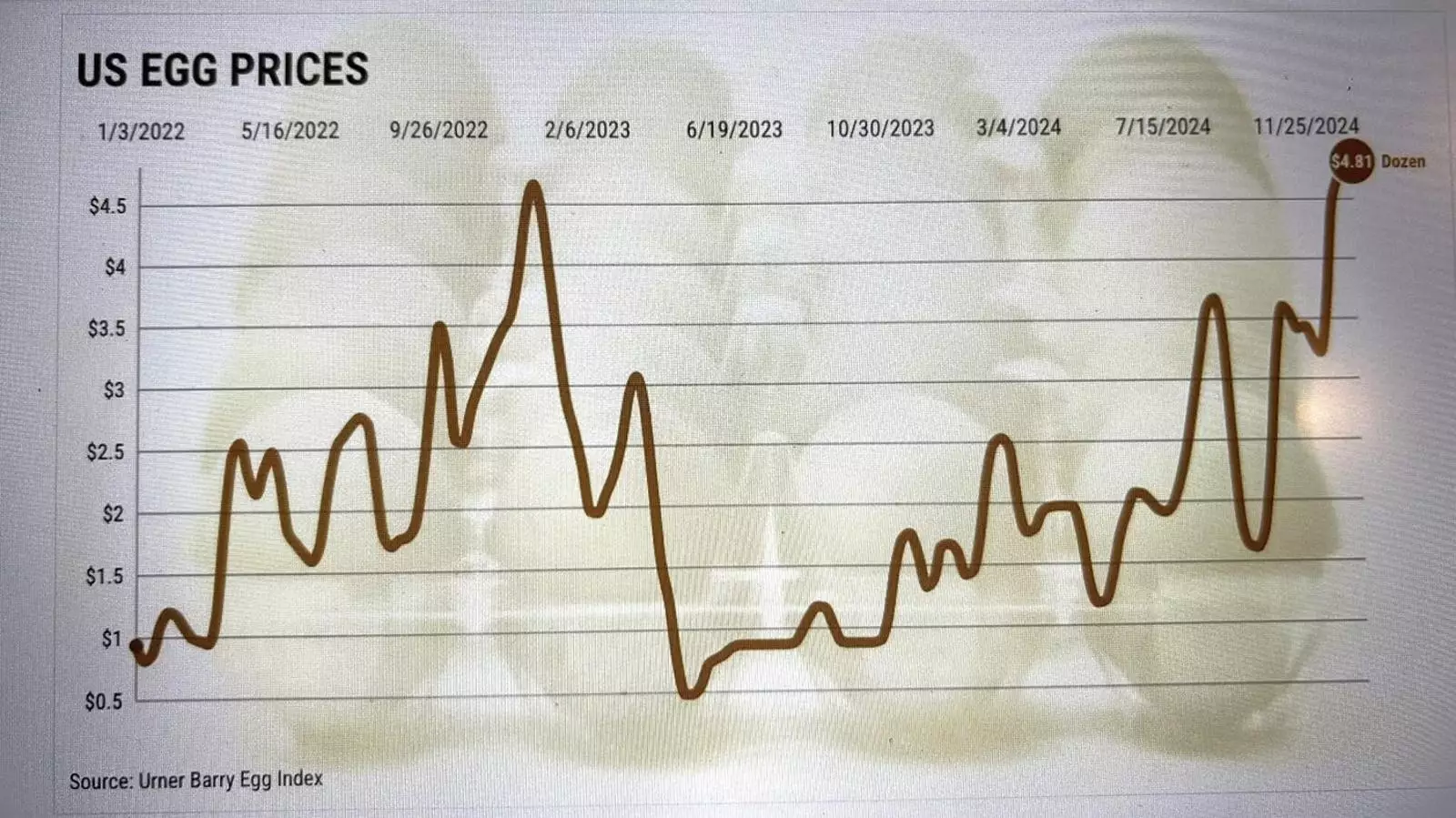Consumer frustrations regarding egg prices are not unfounded. Presently, a dozen Grade A large eggs costs approximately $4.15, a dramatic rise from last year’s average of $2.52. This staggering 36.8% increase prompts critical questions about the underlying factors driving such inflation. While headlines fixate on the cost of eggs, it is imperative to recognize that the discussion must also encompass the chickens that lay these eggs—the foundation of the entire egg production industry.
The age-old debate surrounding what comes first, the chicken or the egg, offers a fitting analogy for the issues faced in egg pricing today. Chickens play a vital role in the ecosystem of egg production, and it takes over four months for a healthy hen to lay her first eggs. This timeline becomes especially crucial in periods where demand surges unexpectedly. If consumers desire more eggs but the supply is not yet available, prices are destined to soar. The complexities begin to multiply when unforeseen delays disrupt the balance of supply and demand, thus amplifying price volatility.
Several key factors have contributed to the current scenario regarding egg prices. One salient point is the change in consumer preferences. In the last few years, there has been a notable shift from red meat to poultry, subsequently intensifying demand for eggs. Coupled with this change is the impact of climate change, which has affected the resources essential for raising healthy chickens: clean water and adequate feed.
However, perhaps the most acute factor driving current egg prices is the emergence of disease. The avian flu outbreak in 2022, specifically the H5N1 strain, has had catastrophic effects, leading to the loss of a staggering 147.25 million birds across the United States, including Puerto Rico. This epidemic not only diminished the overall chicken population but also severely affected egg production capacity.
Statistics paint a grim picture: In 2024, there were approximately 379 million egg-laying hens left in the U.S., reflecting only a 1% growth compared to previous years. This means that after losing about 39% of the flock in just one year, the production rate has struggled to keep pace with demand, particularly when each hen can produce around 300 eggs annually. Compounding the issue, the U.S. has experienced 73 billion-dollar weather-related disasters between 2022 and 2024 that have adversely impacted agricultural production, including the conditions necessary for raising healthy hens.
As consumer demand persists and events like Easter swiftly approach, many experts predict that there could be further price increases. The grim reality is that avian flu continues to spread, posing significant risks to the poultry industry. Recent reports indicate that over 19.63 million birds across 29 states are currently infected, necessitating swift eradication to prevent further outbreaks.
Expectations for egg prices in 2024 project an increase of over 20%, starkly contrasting with the food inflation rate forecasted at only 2.2%. This disparity is particularly alarming and suggests that consumers may need to brace themselves for a sustained period of elevated prices.
Engagement with the realities of agricultural economics is essential for consumers seeking to understand food pricing trends. Unfortunately, no government intervention is likely to mitigate the crisis in the immediate future. The challenges of food production are inherently complex, where external forces such as weather and disease can have lasting impacts.
As we navigate the challenges ahead, it is crucial to stay informed about the evolving landscape of food prices. For consumers striving to minimize the effects of food inflation, seeking deals and remaining agile in purchasing habits become vital strategies. Ultimately, understanding the multilayered factors driving egg prices can help consumers better navigate this ongoing crisis.


Napsat komentář